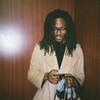KKK mother and child. Photo by Harry Benson. Courtesy of Magnolia Pictures
Ethel Kennedy, shortly after Robert F. Kennedy's assassination in 1968. Photo by Harry Benson. Courtesy of Magnolia Pictures
Harry Benson. Photo courtesy of Magnolia Pictures
Martin Luther King Jr. in Canton, Mississippi, in 1966. Photo by Harry Benson. Courtesy of Magnolia Pictures
Michael Jackson at the Neverland Ranch in California in 1997. Photo by Harry Benson. Courtesy of Magnolia Pictures
Kate Moss in Paris in 1993. Photo by Harry Benson. Courtesy of Magnolia Pictures
